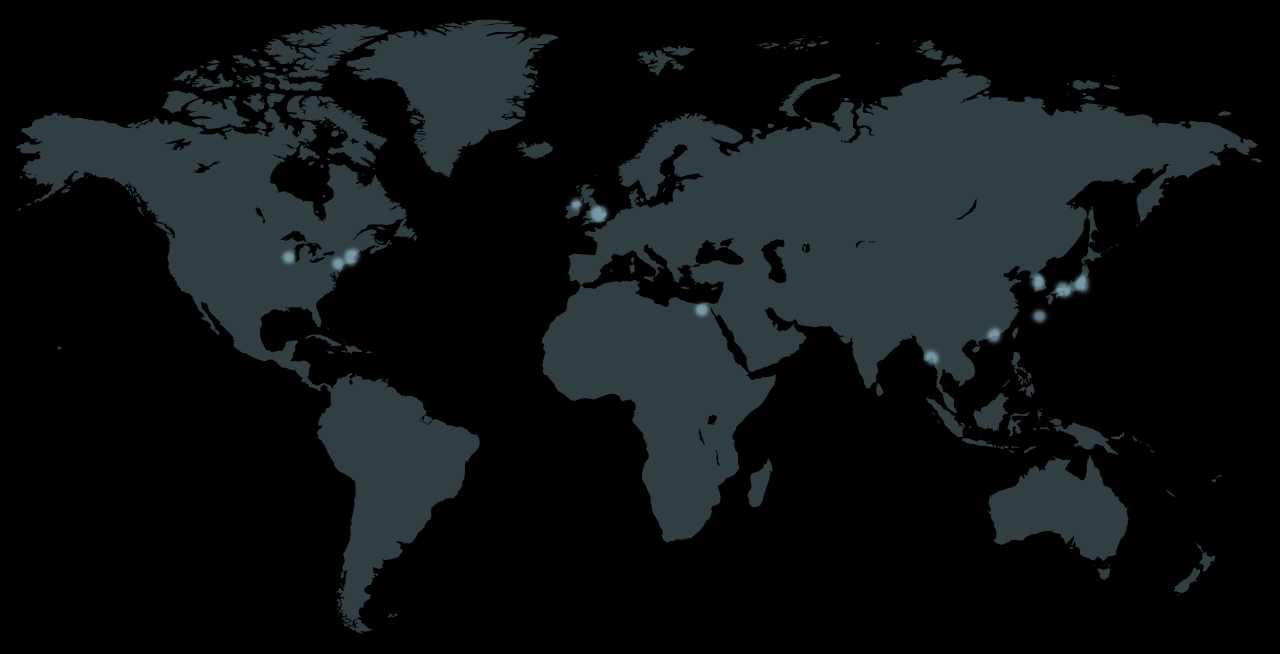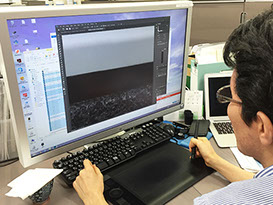Business Contents
→ Company Information
→ Actual results around the world
→ Presented joint research with the Smithsonian Museum at the American Institute of Conservation Annual Meeting
→ Typical Flow of a Scanning Project
→ Superiority
Company Information
Sabia began developing scanning technology in 2007 as a project at the Ide laboratory at Kyoto University. Since then, we have become a full-scale image digitization company, where we continue to develop the most cutting-edge scanning technology, as well as providing scanning development, sales, and scanning services. We focus on preserving cultural properties and paintings, as system software development for utilizing digital data in the most efficient and accessible ways possible.
Using high-resolution technology to scan cultural properties, we provide services focused on your digital reproduction needs, including digital archiving, reprints and reproductions, reproduction of paintings, and replica re-creation. In addition, we offer the world’s highest scanning resolution, ranging from 600 dpi to 14,000 dpi. And focusing primarily on obtaining good raw data, after digitization we can achieve high color fidelity that does not require color correction.
We have developed and now use a wide variety of scanners to perform the most optimal digitization, which is based on the use of cultural properties and the shape of artwork. Depending on what our clients need, we additionally offer on-site scanning, vertical scanning, infrared (IR) imaging, as well as ultra-large subject scanning with an adjustable gantry system.
By using the most up-to-date digital technology, we offer a thorough array of digital archiving solutions—from digitization to archiving to content creation—in order to carefully and faithfully preserve cultural assets both within Japan and around the world.
Based on advanced scanning and analysis technology, we have carried out digitization of more than 10000 high definition digital images such as temples, art objects, cultural assets etc. in Japan and. abroad.

Actual results around the world
Based on advanced scanning and analysis technology, we have carried out digitization of more than 10000 high definition digital images such as temples, art objects, cultural assets etc. in Japan and. abroad.
Presented joint research with the Smithsonian Museum at the American Institute of Conservation Annual Meeting

We participated in “AIC (American Institute for Conservation)” for several years, and in 2015 we made a joint research presentation with the Smithsonian museum on the importance of the digital archives our company’s scanning system and the usefulness of ultra-high definition image acquisition it was.
Typical Flow of a Scanning Project
 |
1. Request for information・site investigation
Gather information on the objects to be scanned, scanning site, and output needs (purpose of digitization). ↓ 2. Planning and Preparations ↓ 3. Scanning ↓ 4. Image Processing ↓ |
Superiority
| ・Severe image distortion caused by pronounced lens aberration. ・Multiple lighting adjustments (with stroboscopes, flashes, etc.) results in large variations in color quality. |
・Lens aberration is small because a CCD line sensor is used, resulting in almost no image distortion. ・Color quality is stable because high-quality LED lighting is used on the subject at a fixed distance. |
|
| Color Precision | ・about 5〜25 | ・less than 1.2 |
| ・Light adjustment causes long imaging times. ・Extremely high image processing costs (to correct distorted images due to lens aberrations). |
・Quick LED illumination adjustment time. ・Fast scanning speeds result in shorter imaging times. ・Distortion-free images reduce post-processing man hours and lower costs. |
|
| ・Equipment is light and installation is simple. | ・Scanner is extremely portable, weighing around 60 kg. Extra lighting, etc., is not required. | |
| ・Effects on cultural objects may be large, depending on the amount of light used (with a stroboscope, flash, etc.) | ・Light intensity is low with LED light sources, minimizing the effects on the object being imaged. ・As a non-contact scanner, there is no potential for damage to the cultural object. |
|
| Special Light Source | ・With IR imaging, imaging is performed multiple times, but identical images cannot be obtained. ・Images of metallic objects (silver, gold, etc.) cannot be captured with a camera. |
・Identical images can be obtained using both visible and IR light. ・Images of metallic objects can also be taken by adjusting spectral reflection |


